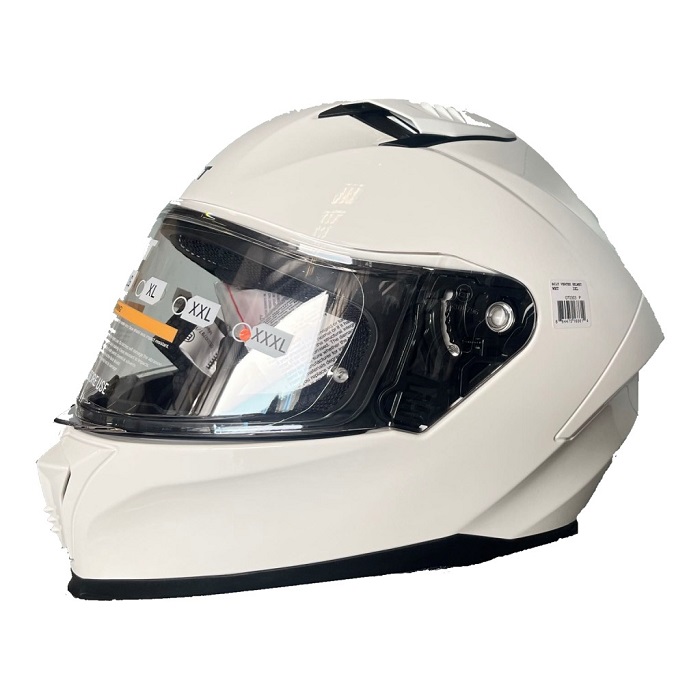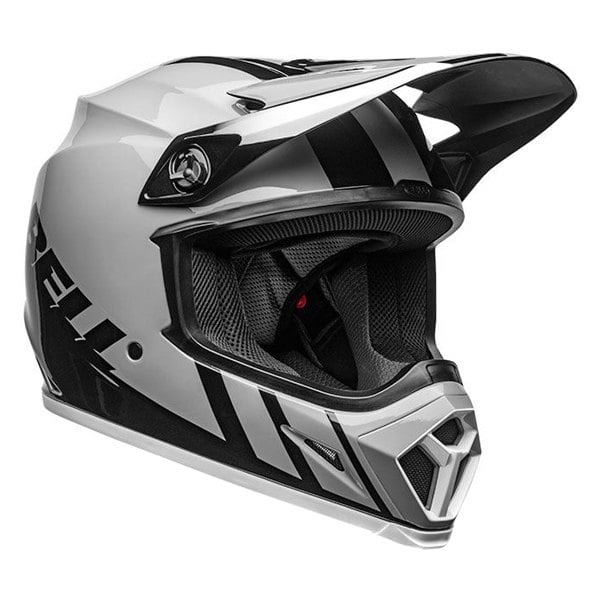Jan 15, 2025
When to Replace Helmet Motorcycle: Safety Tips
Recognizing the Signs of Wear and Tear
Identifying when to replace helmet motorcycle is crucial for safety. Start by inspecting your helmet regularly. Look for cracks, frays, or dents in the shell. Examine the interior padding. Over time, it may compress, lose firmness, or show signs of wear. Assess the visor or face shield for scratches that impair vision. Notice if the retention system, the straps and buckles, are fraying or not fastening securely. Be mindful of changes in fit. Helmets loosen with prolonged use, reducing protection. Address minor issues promptly. However, significant damage calls for immediate replacement. Keep in touch with helmet safety, and never overlook wear and tear.
Importance of Helmet Expiration Dates
Understanding the importance of helmet expiration dates is key for your safety on the road. Motorcycle helmets have a lifespan, and even without visible damage, they degrade over time. The materials used in helmet construction, like the foam inside the shell, can deteriorate. Exposure to UV rays, weather, and the oils from our skin all contribute to this process.
Most manufacturers recommend replacing motorcycle helmets every five years. Why five years? The helmet’s materials lose their ability to absorb and distribute the energy from an impact. This makes an older helmet less effective in protecting your head during a crash. Always check for a sticker or embossed date indicating when the helmet was manufactured to know its age.
Certain conditions can shorten a helmet’s lifespan. Frequent use, carrying helmets loosely attached to the motorcycle, and storing them in high temperatures or in direct sunlight can accelerate aging. Take note of the production date and treat it as a “best by” date for reference.
Moreover, technological improvements are constant. Helmets made five years ago may not incorporate the current advancements in safety and comfort. Upgrading to a newer model ensures you’re benefiting from the latest industry standards and features.
As part of your routine, make a habit of checking the expiration date. When the time comes to replace your helmet, do not hesitate. Riding with an expired helmet increases your risk and negates your safeguards. Remember, a helmet is a crucial investment in your well-being on the road.
The Impact of Accidents on Helmet Integrity

A helmet’s prime objective is to absorb impact. Yet, an accident can compromise its integrity. Even a minor fall can cause unseen damage to the helmet’s structure. This can greatly reduce its effectiveness in a future crash. Hence, it is crucial to inspect your helmet after any impact.
After an accident, assess your helmet for cracks, dents, or other damage. Some signs are visible, such as scratches or a crushed shell. However, internal damages, like those to the foam liner, may not be as obvious. These internal components are key to shock absorption. If they are damaged, the helmet will fail to protect you adequately.
When to replace helmet motorcycle post-accident? Immediately, if it has taken a significant hit. Manufacturers design helmets to withstand one major impact. After which, their ability to protect diminishes. Even if the helmet appears fine, unseen damage might exist. Therefore, default to caution and replace it.
Do not overlook the retention system either. An accident can strain or snap the straps or buckles. A helmet that does not stay securely on your head is unsafe. So, proper function of the retention system is non-negotiable.
In summary, any accident may affect helmet safety. For peace of mind, invest in a new helmet after your helmet endures an impact. It’s a small price to pay for life-saving protection.
Upgrades in Helmet Technology
Motorcycle safety has made great strides, and helmet technology is no exception. Within this dynamic industry, manufacturers are constantly developing new features that provide better protection and comfort for riders. As a motorcycle enthusiast, staying informed about the latest helmet technology upgrades is crucial. These upgrades can make a significant difference in your overall safety and riding experience.
Firstly, advancements in materials have led to stronger and lighter helmets. New composite materials, like carbon fiber and Kevlar, offer increased protection without adding extra weight. This means you can ride comfortably for longer periods without strain on your neck and shoulders.
In addition, modern helmets now boast improved ventilation systems. They help maintain a comfortable temperature and reduce fogging, which enhances visibility. Remember, clear vision on the road is essential for avoiding accidents.
Another upgrade comes in the form of enhanced impact absorption. Innovations in the foam liner technology provide better energy distribution during impacts. These improvements ensure that your head gets maximum protection when it matters the most.
Manufacturers have also introduced better aerodynamics in helmet design. Improved helmet shapes reduce wind resistance and noise. This leads to a more enjoyable ride, especially at high speeds. You can stay focused on the road without the distraction of wind noise.
Lastly, consider the smart technology now available in helmets. Features like Bluetooth connectivity, GPS, and built-in cameras add a new layer of convenience and security. With hands-free communication and the ability to record your rides, smart helmets are revolutionizing the way we think about motorcycle gear.
In conclusion, upgrading to a helmet with the latest technology can greatly enhance your safety and riding pleasure. With such rapid advancements, when to replace helmet motorcycle is not just about wear and tear, but also staying up-to-date with these life-saving innovations. Make it a point to check out the newest models and consider an upgrade every few years to take full advantage of the evolving helmet technology.
Innovations in Safety Features

The motorcycle helmet industry has not stood still in terms of safety features. With riders’ well-being in focus, brands are driving forward with innovative solutions. Keeping abreast of these advancements helps determine when to replace helmet motorcycle.
Modern helmets come with improved fit systems. More adjustable and snug, these systems ensure a helmet stays firmly in place. This enhances protection by preventing movement during a crash.
Emergency release systems have also emerged. Such features allow first responders to remove the helmet safely, reducing the risk of additional injury.
Some helmets are now equipped with Multi-directional Impact Protection Systems (MIPS). MIPS adds a low-friction layer inside the helmet. This layer allows the helmet to slide relative to the head, helping to reduce rotational forces on the brain in certain impacts.
Visors have seen upgrades too. They now offer better anti-fog, anti-scratch, and UV protection. This keeps vision clear and eyes shielded from the sun’s harmful rays.
Reflective materials are a growing trend for increased visibility. They make riders more noticeable to other road users in low-light conditions. Bright colors and reflective stickers are examples of this approach.
Helmet manufacturers continue to focus on weight reduction as well. Lighter helmets make long rides more comfortable and reduce neck fatigue. But they do so without compromising on safety.
In sum, safety feature innovations play a big role in considering when to replace helmet motorcycle. They improve rider safety significantly. It pays to stay informed and gear up with the latest enhancements. Always choose helmets that boast these modern safety features for the best protection on the road.
Manufacturer Recommendations for Helmet Replacement
When determining when to replace helmet motorcycle, manufacturer guidelines provide a reliable benchmark. These guidelines help you understand the designed lifespan and expected durability of your helmet.
Manufacturers typically suggest replacing helmets every three to five years, based on regular usage. This timeframe ensures optimal performance and safety from the materials within the helmet. Factors such as the quality of materials, technological features, and usage patterns contribute to this timeframe.
Check the manufacturer’s recommendations which often come with the helmet. This information can be found in the manual or on a label inside the helmet. Adhering to these guidelines is important for maintaining adequate protection.
Keep in mind that the ‘five-year rule’ is a general recommendation. If you ride very often or in harsh conditions, you might need to replace your helmet sooner. Frequent exposure to the elements or heavy usage accelerates the aging process.
In case of updates or recalls, some manufacturers reach out to customers directly. Be sure to register your helmet with the manufacturer upon purchase for such notifications.
Inspect your helmet regularly and take care of it. Even with care, natural degradation over time affects the helmet’s safety capabilities. Let manufacturer advice guide you on when to consider a new helmet.
In summary, follow manufacturer advice on replacement, check your helmet’s documentation, and be proactive about your helmet’s condition. Doing so ensures that you remain well-protected on every ride.
How to Properly Maintain and Store Your Helmet

Proper maintenance and storage of your motorcycle helmet are essential to its longevity and effectiveness. To ensure you get the full lifespan out of your helmet, follow these maintenance and storage tips.
Firstly, keep your helmet clean. Wipe the exterior with a gentle cleaner approved for use on motorcycle helmets. Avoid harsh chemicals that might degrade the materials. For the interior, use a mild soap and water solution, and allow it to air dry completely; this prevents the growth of bacteria.
Secondly, handle your helmet with care. Dropping it can compromise its safety features, even if no damage is visible. Always place it on a stable surface or in a secure helmet bag to avoid accidental falls.
When storing your helmet, choose a cool, dry place away from direct sunlight. UV exposure can weaken a helmet’s structure over time, so avoid windows or other places where sunlight is strong. Also, keep it away from fuels, exhausts, and other chemicals that could cause the materials to break down.
Do not hang your helmet on a motorcycle mirror, as this can deform the padding inside over time. Instead, store it on a flat surface or in a designated helmet storage area.
Finally, check the helmet before each ride. Look for signs of wear and tear, such as cracking or loosening of the padding. If you notice any concerns, consider whether it’s time to replace your helmet.
By looking after your helmet properly, you’re not only protecting its condition but also ensuring your safety when you ride. Remember, a well-maintained helmet is a vital part of safe motorcycle riding.
Legal Requirements and Safety Standards
Knowing when to replace helmet motorcycle isn’t just about wear and tear. It also involves legal requirements and safety standards. Different countries and states may have specific legal guidelines on helmet use. It’s your duty to know and follow these laws.
Most places mandate the use of helmets that meet certain safety standards. These standards ensure that helmets offer a minimum level of protection. In the United States, for example, the Department of Transportation (DOT) sets a federal motor vehicle safety standard (FMVSS 218). Helmets must display a DOT sticker to signify compliance.
Other safety standards include the Snell Memorial Foundation standards or those set by the Economic Commission for Europe (ECE). Some riders look for helmets certified by multiple standards for added assurance of safety.
Another point to consider is that laws can change. Stay updated on the latest requirements. Manufacturers also follow these safety standards while designing helmets. They will often feature the latest norms in their new models.
To conclude, when deciding when to replace helmet motorcycle, consider the legal aspects and the safety standard certifications. Your helmet must comply with current laws and standards to ensure maximum protection and legality on the road.
More Details